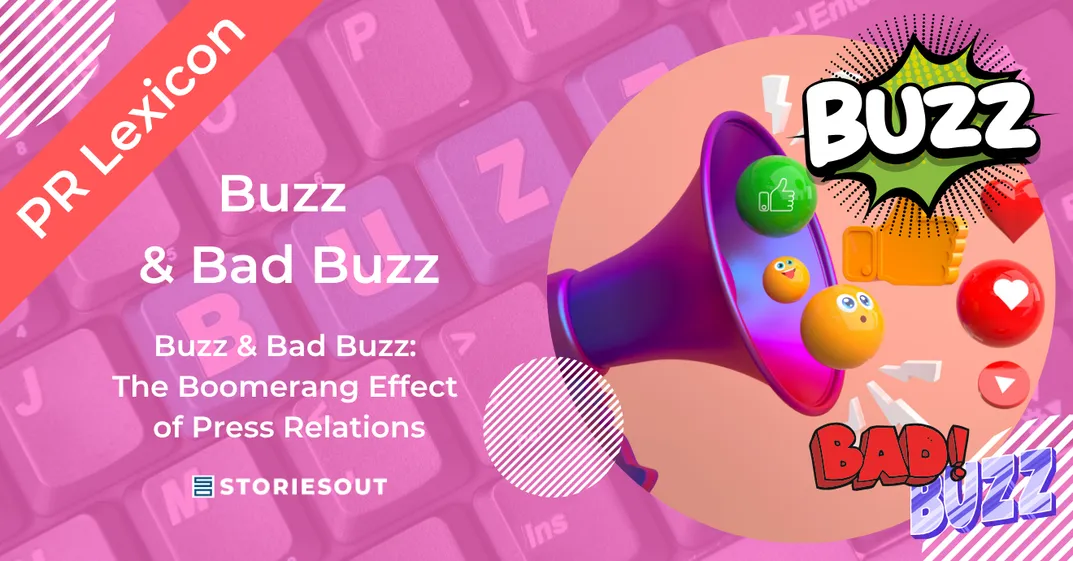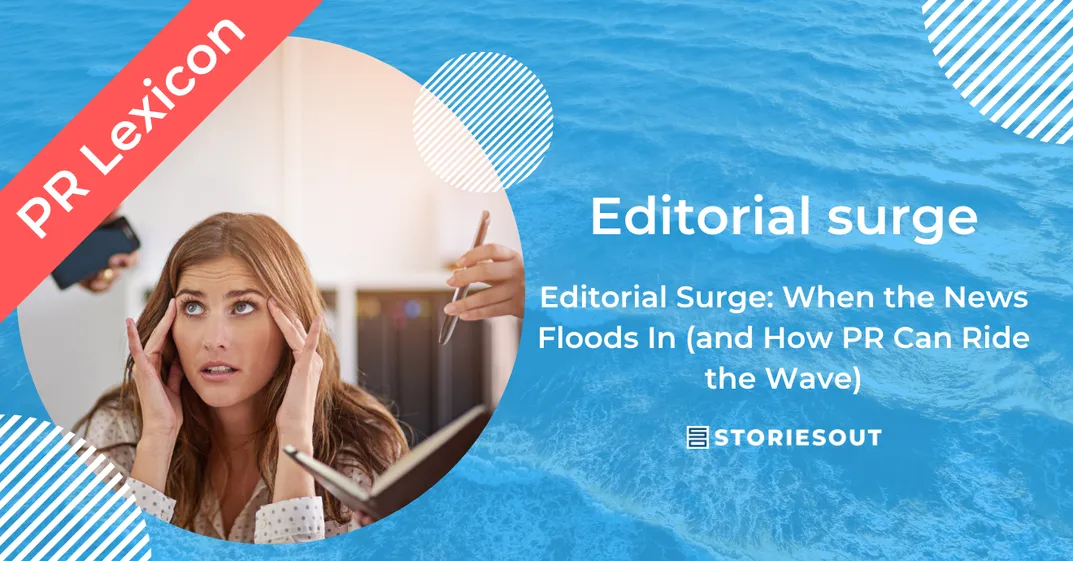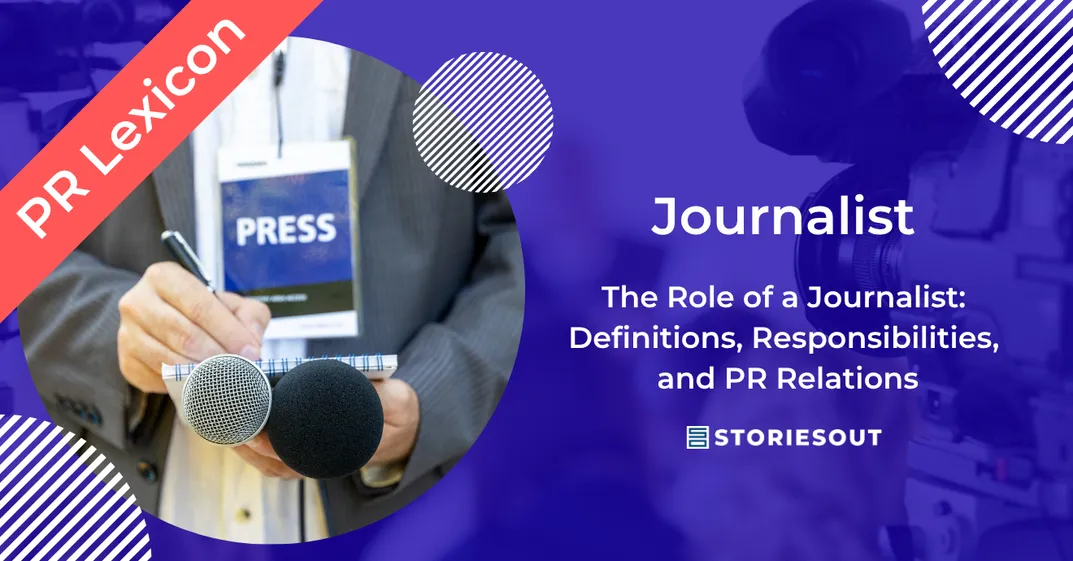Let’s get one thing out of the way: we’re not talking about the “buzz cut”, the trendy close-cropped haircut (although it’s a top SEO search term). What really interests us today is the media buzz (& bad buzz): that moment when a piece of news explodes, circulates, spreads… and sometimes backfires on the one who triggered it.
So, What Exactly Is a Buzz?
In the language of journalism and public relations, a buzz is a piece of content or news that generates rapid, massive, and viral attention. It could be an article, a statement, a campaign… or a single tweet that catches fire.
It’s a phenomenon often pursued by communicators, sometimes feared by journalists, and always fascinating to observe.
A Word That Comes from… Bees?
Yes. The term buzz comes from the low, continuous sound made by bees. In both marketing and journalism, it evokes a collective excitement around a topic that “makes noise.”
It first appeared in 1940s American advertising, entered newsrooms in the early 2000s, and has been buzzing through social media feeds ever since.
What Does Buzz Do in PR?
For PR agencies and professionals, buzz can be a powerful visibility booster but it must be handled with care.
A good PR buzz:
- Builds on a clear, solid, and owned message,
- Targets the right media (not just the loudest),
- Respects journalists as much as audiences,
- And, most importantly, never feels forced.
One of the paradoxes of PR?
The harder you chase the buzz, the less likely it is to happen.
But when it rises organically, when a story truly resonates, that’s when everything opens up.
Buzz in the Media: Editorial Engine or Toxic Mirage?
Buzz is now an audience barometer for many media outlets, especially online. It helps measure a topic’s traction — through clicks, comments, shares — and often becomes a driver of editorial choices.
The Upside
- Faster publication: a buzzing topic can go from tweet to headline within the hour.
- New perspectives: buzz can breathe new life into familiar stories.
- Reader proximity: covering what “everyone’s talking about” creates instant relevance.
The Downside
But speed has a price:
- Mob mentality: media coverage can become repetitive, approximate, or even manipulated.
- Emotional bias: urgency trumps fact-checking, and buzz distorts perspective.
- Credibility loss: chasing buzz can erode a media outlet’s standing with critical readers.
Bottom line:
Buzz can be a powerful editorial tool but only when paired with critical thinking and solid editorial filters.
Bad Buzz: PR Crisis or Strategic Turning Point?
A bad buzz isn’t random. It’s usually the result of misalignment between what a brand communicates and what its audience perceives, expects, or tolerates.
Common Bad Buzz Scenarios:
- Poor tone (off-color humor, disconnected messaging)
- Bad timing (marketing in the middle of a crisis)
- Inconsistencies (greenwashing or broken promises)
- Crisis mismanagement (silence, denial, deflection)
When it spirals…
- Viral escalation: a clumsy message can spark thousands of comments in hours.
- Media snowball effect: what starts on Twitter ends up on TV, and vice versa.
- Reputation damage: poorly handled bad buzz can leave lasting scars, even irreparable ones.
But also… a valuable signal
A well-analyzed bad buzz provides key insight into brand perception:
- It highlights friction between intended and perceived image.
- It challenges tone, timing, and message hierarchy.
- It may even lead to meaningful repositioning – or reinvention.
PR Perspective
Agencies should be able to:
- Prevent bad buzz (monitoring, tone analysis, editorial advice)
- Respond in real-time: right message, right channel, clear tone and either pause or apologize as needed
- Learn from it: debrief, document, and feed it into future Retex (return on experience)
Is Buzz Outdated in 2025?
After two decades of social media, is buzz just a relic from the early days of Facebook? Maybe. It does sound a bit “2009”, a bit like “trying too hard to sound cool”. But its essence is more relevant than ever:
It’s not the word that matters.
It’s the echo a message creates in the public sphere.
Call it virality, traction, momentum, trend… the mechanism remains the same: a sudden visibility shift that can change everything.
In Conclusion
Buzz is neither good nor bad, it’s an accelerator. It can amplify a bold idea… or expose a weakness. Bad buzz isn’t the end. It’s often a truth test and an opportunity for growth. But one thing’s for sure:
It’s not the noise that defines the value, it’s what remains when the noise fades.
FAQ – Buzz & Bad Buzz
What is a buzz in public relations?
A buzz is a piece of news or content that generates rapid, massive, and viral attention in the media and on social networks. It can start from a statement, an article, a campaign, or even a single post that captures collective attention.
Where does the term “buzz” come from?
The word originates from the humming sound of bees. It was used as early as the 1940s in U.S. advertising and became part of journalistic and marketing vocabulary in the 2000s with the rise of social media.
Why do brands seek buzz?
Because it acts as an accelerator of visibility and awareness. A successful buzz allows a brand to reach a large audience quickly, amplify a clear message, and create immediate proximity with its public.
What are the risks of buzz for media and companies?
Chasing buzz can lead to excesses: herd effects, repetitive or approximate coverage, emotional bias, and loss of journalistic credibility. For brands, a buzz that is poorly managed can easily turn into a bad buzz.
What is a bad buzz?
A bad buzz is a buzz that backfires against the source. It usually occurs when there is a gap between what an organization communicates and what its audience perceives, expects, or tolerates.
What are the main causes of bad buzz?
- An awkward or misinterpreted tone
- Poor timing (e.g. commercial promotion during a crisis)
- Incoherence between words and actions (especially around CSR claims)
- Poor error management (silence, aggressiveness, denial)
What are the effects of a bad buzz?
It can cause explosive amplification on social networks, negative media coverage, and lasting, sometimes irreversible, damage to the image of a brand, leader, or organization.
Can a bad buzz be useful?
Yes. If properly analyzed, it reveals gaps between intended and perceived image, provides valuable insights into public perception, and can be used as a lever to adjust communication or even rethink the overall strategy.
How can PR professionals prevent a bad buzz?
- Maintain active monitoring to detect weak signals
- Ensure consistency between communication and real actions
- Anticipate crisis scenarios with pre-prepared communication plans
How should a bad buzz be managed?
By reacting quickly with clear, adapted messaging, choosing the right communication channel, acknowledging mistakes when necessary, and steering the crisis with a calibrated response strategy.
Is the word “buzz” still relevant in 2025?
The term may sound a bit dated, but the phenomenon is as central as ever. Today, people may talk more about virality, traction, momentum, or trending. The principle remains the same: a sudden surge in visibility that can completely shift perception.




